
Table of Contents
- SEO Marketing Definition
- How SEO Works
- How to Use SEO Marketing?
- Who Needs SEO Marketing?
- SEO Tools Used
- SEO Marketing
- Key Takeaways
- Conclusion
- FAQs

Search Engine Optimization (SEO) and Search Engine Marketing (SEM) are two related digital paddles today that successfully drive content reach and ultimate business success through profitable visitor action in the digital sphere. So, understanding what SEO marketing is is a crucial step in successfully presenting your business in the digital world and gaining planned returns.
So, let’s set out first to understand SEO marketing and later delve into how SEO works and other crucial peripheries that help you get a clearer and broader picture of how it relates to relevance, authority, value generation, and consistency. Before that, let’s give you a hint on that. Take a moment to ponder how you reached out to this page from the Internet’s vast and deep informational structure. Well, the answer to this remotely is through SEO. We will explain how later!

SEO Marketing Definition
To understand the meaning of SEO marketing, it is of essence that you know in detail what SEO comprises. Search engine optimization, abbreviated as SEO, is a technique formulated to bring traffic to a page on the Internet by organically obtaining a ranking on the SERPs or search engine result pages.
A well-optimized page for search engines not just improves its ranking but also pulls up your website and brand’s face on the Internet, among a plethora of other benefits. Deriving what SEO marketing is from here, we can safely say that it refers to the digital marketing techniques that allow you to integrate SEO on Internet pages for improved reach and rankings on the SERPs.
Well-planned SEO marketing integrates a well-knit understanding of how SEO works with what customers look out for in your concerned niche.
A good SEO-enabled page would roughly be a combination of,
- High-ranking keyword integrations
- Quality content creation
- Value-based content distribution
- Multi-dimensional optimization
- Backlink generation from reputable and authoritative websites
- Goal-oriented result measurement and rectification
Understanding what SEO is in digital marketing is still quite a vast concept with sub-concepts that integrate to make the difference of one page ranking better than the other. SEO has, nevertheless, become an integral and indispensable part of digital marketing, which can be as essential to a business or brand’s sustenance as food and nutrition is to human life. To better understand SEO, let us move on to knowing how it works.
How SEO Works
User satisfaction runs at the core of SEO and how it works efficiently. Here’s a quick image illustration.
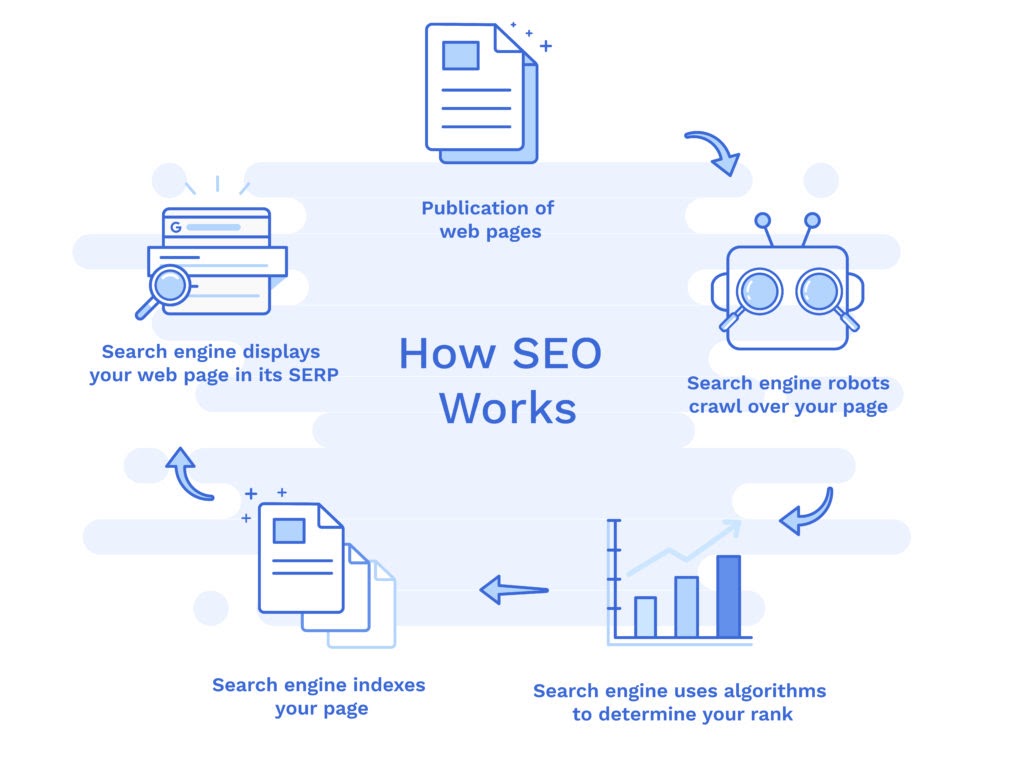
Types of SEO
Here’s a simple definition of the three types of SEO.
1. On-page optimization
It refers to the relevance of a page’s content for an enhanced user experience. Such optimization can span wide, from accurate keyword targeting to reach the right audience to keep the content quality and title attractive and enriching. It allows the reader a chance to gain access to the correct information.
Grabbing the reader’s attention at the first go is as essential as addressing the right audience so that your page receives the click it deserves. Content management tools often come in handy to efficiently initiate and complete on-page optimizations.
2. Off-page optimization
Off-page optimization is something SEO marketers do beyond the user’s line of sight while ensuring meaningfulness, value, and relevance for the target audience. These activities are undertaken outside the concerned websites and work to nudge a relevant reader into such content through backlinks generated from contextually related authoritative sites. However, backlinking is just a part of the total off-page optimization, which depends on various tools and techniques for organic traffic generation for a website and/or its page(s).
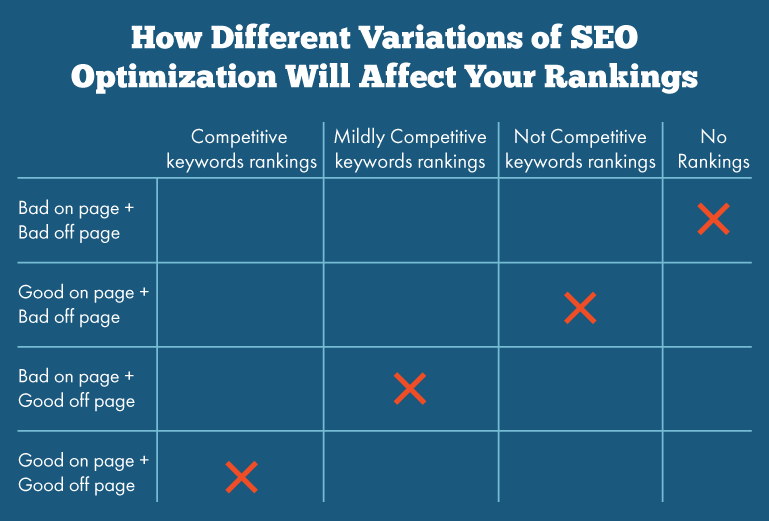
3. Technical optimization
Technical optimization is one of the most important aspects of how a search result reaches you. It is mainly in the background and unrelated to website content and involves the minute aspects that contribute to impacting the overall user experience when a targeted audience reaches a page/website through any device.
For instance, if website images take too long to load on a smartphone, the website’s technicals are probably not well-optimized. It often has more to do with the optimization of website designing and development than the content it carries.
The ultimate aim of all these optimizations, however, is to enhance the user experience. This structural SEO integration aligns with how search engines work and their rankings on the SERPs. So, to better understand the working of SEO, it is important to get the correct answers to how search engines work?
Let’s take a look!
Today, Google is one of the most widely-used search engines globally, with all businesses and brands, new or old, big or small, vying for a place in Google’s first few SERPs. Google is so much of an everyday need today that whenever one needs an answer to any query, they usually go for a quick Google search. For instance, if one is looking for the phrase, “how does Search Engine Optimization work?” this page is just one of the results a reader will stumble upon. Google’s AIs are a simple answer to how we or any other similar page lands on the Google SERPs! These automated bots – better known as crawlers in the world of digital marketing – work in the background to bring the most relevant results that serve high-quality, valuable content! Other search engines used worldwide, such as Bing and MSN, also work similarly.
So, back to how SEO works on Google and how a search engine finds a page relevant!
Three pillars of SEO
The answer lies in a few simple words: authority, relevance, and usefulness. Here’s a detailed insight on each one of them and how they contribute to helping identify a website/page as the right one to take the top place on all of the SERPs.
1. Authority
Google runs advanced algorithms that work to filter pages and bring about the desired search result for a user. These algorithms are designed to determine if the page’s content accurately provides the information and whether the user can trust it or not. But how does Google identify such accuracy and trustworthiness? By identifying the total number of links a page has received from other websites. It indicates the dependability of a large chunk of users on the page for information related to the given niche.
Other factors include,
- Traffic received by the page for the specific information
- Length of the information contained
- Latent semantic indices or LSIs used
- Long-tail keywords usage to establish contextual understanding, etc.
A page that has received a high number of links from other websites stands a good chance of earning a high rank on the SERPs. Unlike other search engines, Google uses its dedicated algorithms to establish the authority of a page, which sets it apart from most other search engines.
2. Relevance
A keyword is any specific and related word that helps a search engine establish content relevance to a particular niche or genre. Here’s a simple example of how certain words, known as keywords, can be useful in identifying targeted content.
If you are looking for smartphones under Rs.20,000, and if similar content is targeted towards this product aspect, the keyword carries the theme and works as a link in connecting the user with such targeted content. Thus, for the mentioned keyword, a content piece targeted at smartphones with an 8GB RAM might not be the right fit, but content that specifies smartphones under Rs.20,000 with 8GB RAM can be just what a user might be looking for.
So, keywords establish the relevance of a given content, and its long-tail version helps narrow down the searches.
Google crawls the web for the right search results and scans for such targeted keywords, identifying results that are most likely to fit the answer to a user’s search query out of the millions and billions of pages that exist. It helps establish relevance resulting in better rankings for such pages. However, relevance is not an independent aspect and is combined with page authority and usefulness to bring about overall meaningfulness.
3. Usefulness
Along with being authoritative and relevant for a given niche, content must also enhance the user experience.
The usefulness of a page can thus make or break the possibility of a page receiving a higher ranking on Google SERPs. For instance, even if the content is written by an industry expert with the right relevance and has gained lots of valuable links over time, its lack of use due to excessive jargon and difficulty of understanding can reduce its usefulness.
Contrarily, even if someone new to the industry has provided relevant content with a well-organized structure and simple explanation, the content piece has greater chances of ranking higher.
Google’s SEO algorithms and tools
Now, let’s shift our focus to the algorithms and tools that Google uses for such filtration, along with steps that would help us understand the entire ranking process to understand better how SEO works on Google and where it can contribute.
Hummingbird
Hummingbird is Google’s primary algorithm that uses complex programming of AIs for search result identification and ranking. The AI establishes authority, relevance, and usefulness of content based on qualitative aspects related to particular niches to filter pages, order them, and establish rankings.
As the algorithm has quite a huge responsibility to filter billions of pages – accounting for new pages and the dynamics of existing pages – the page’s ranking can change daily. Here, the organic quality of a page can work in its favor in sustaining its place among the top 10 or 20 rankings.
RankBrain
Although not a primary algorithm of Google, RankBrain still contributes significantly in helping the search engine understand a content’s relevance, authority, and usefulness. It is a sub-algorithm designed based on machine learning programming.
It is automated to identify new words and phrases added to the search engine and connect them with similar queries to establish relevance for given context or contexts. The AI improves Google’s capacity to induct new phrases and understand their meaning to improve search results to provide the ultimate user experience.
RankBrain’s smart input allows Google to identify and reward sites that prove more valuable and satisfactory as per the user’s expectation than other sites in the same niche. Google updates these algorithms from time to time and introduces new ones to empower its AI for better results and improved user experience.
Here’s how a well-planned SEO strategy can help leverage page optimization through RankBrain’s inputs.
- Medium- to long-tail keywords related to the main keyword can be included to establish a contextual understanding of its search queries so that RankBrain identifies it conveniently.
- It aids the inclusion of relevant phrases in the content title and description and their optimization to receive user clicks easily and increase organic visits to the website. It helps increase the website’s click-through rate, an important parameter RankBrain considers for contextual and usefulness determination. Click-through rate defines the number of times users have visited the website and stayed on it. The higher this rate, the better it can be for an SEO strategy to work.
- A website’s content can also be optimized for a high dwell time, which defines the time spent by users on the page they clicked. A higher dwell time establishes the meaningfulness of content. If such a dwell time is significantly low, it transforms into a bounce rate, a negative parameter that brings down the overall ranking of a site or page. The website or page must also be optimized to reduce bounce rate, so its impact remains low to zero on the rankings.
Optimizing a website and web pages for leveraging through RankBrain’s algorithm can lend a good peek into the overall understanding of search engine marketing.
How search engines rank websites
Let’s get back to the critical steps that define how search engines like Google rank websites and web pages. The algorithms fed into search engines are smart AI-enabled programs that search through billions of pages to bring out the most accurate results in the minimum possible time.
Search engines use these three steps to identify such results accurately.
Step 1: Website page crawling
Search engines use automated programs known as web crawlers for finding and recording new information related to websites and web pages. These crawlers identify inter-connected links to understand the relevance, usefulness, and authority of the hosted content. These crawlers can recrawl the pages from time to time to gather any updated information on such pages and record them in their database.
Step 2: Content indexing
Once the crawling is complete, AIs identify whether such websites and pages are worth their relevance or not based on the content quality. If positive worthwhileness is established, such pages are indexed in the search engine’s database. These indexings are later retrieved to rank pages based on their usefulness for readers. Primarily, unique and high-quality content stands a better chance of being indexed by the search engine. Some reasons why a webpage may not be indexed include,
- Duplicacy of content
- Spamminess or low-value content
- Inability to be crawled
- Absence of inbound links to the domain or page, etc.
It is thus essential that these aspects be taken care of when optimizing content, so it is easy to crawl and has all the necessary inclusions for indexing.
Step 3: Page/site ranking
Ranking is the last step in the working of a search engine and defines the order in which various web pages would be available on the SERPs. These rankings can be done only after the search engine successfully completes the crawling and indexing of a web page. Search engines use a wide range of signals, over 200, to rank web pages. These signals can be easily segregated into SEO types, i.e., on-page, off-page, and technical optimization. Common examples of these signals are,
- Inclusion of keywords or related terms in meta tags
- The reputation of the website for the available content niche
- Speed of web page loading
From here on, it gets easier to understand how SEO works to help improve the overall ranking, visibility, and reach of a website or webpage. However, as per SEO guidelines, these improvements must take place organically through an understanding of the natural informational need of the target audience and by providing them with an improved user experience.
Organic vs. Paid traffic
To identify organic traffic, it is essential to differentiate it from paid traffic. Here’s a detailed insight into this difference.
- Positioning: Paid results are always among the top-ranking results, followed mainly by organic results. So, there is a high possibility that the first one or two results that you obtain on the SERP the first time you search for a query are paid results. Later on, based on your search patterns, a search engine can push up organic results to the top to establish maximum usefulness.
- Measurement of ROI: Returns obtained through paid results are easy to measure as the keyword data provided by a search engine is more profound and measurable by tools like Google Analytics. Contrarily, the returns obtained through organic results are a tad challenging to measure due to insufficient or scattered data.
However, when measuring ROI in the long term, organic results often perform better than paid ones as the latter’s ROI often declines over time, which is not the case with organic results.
- Time taken for the result: One key difference separating organic results from paid ones is that the former usually appear late on the SERPs.
In contrast, you can expect quick placement on the SERPs in as little time as just a few minutes with paid results. In the case of organic results, such rankings can take weeks, months, and as long as years to appear. Thus, when targeting organic results placement for your page, it is wise to consider it as a long-haul and sit on your strategic SEO implementations before they bear the results.
- Total traffic share: Organic and paid results also differ significantly when acquiring their shares in the total search traffic. Organic results are the winners because as much as 70% to 80% of such traffic share is enjoyed by organic results due to their relevance, sustainability, uniqueness, accuracy, and various useful factors that improve the overall user experience.
Contrarily, paid results receive only up to 20% to 30% of the total traffic that the search results collect.
- Payment involved: As the name suggests, paid results are the ones that involve direct payment from businesses to Google for displaying ads on different websites. With every user’s click, the advertising business pays the website under the PPC or CPC model. Paid results are thus incidental to such clicks on different platforms, whereby ads display becomes a source of revenue for Google.
In the case of organic results, no such payments are involved, and traffic is received free of cost. Organic results, however, require a long-term investment of time and resources for generating such traffic.
From the perspective of ranking sustainability, organic results are a clear winner, making them more dependable for users than paid results, thus gaining favor with search engine algorithms for a further organic push. However, the two results are not altogether different and carry some similarities. Here are some important ones.
- Use of landing pages: Irrespective of whether it is an organic result or a paid result, both need landing page creation for traffic to come by. In the case of organic results, the website must be connected to such a landing page. For paid results, though, the landing page may be either organic or separately created for the purpose.
- Research for keywords: Both of these result orientations are based on keyword research as the user can ultimately reach out to either of these pages through a keyword query search only.
- Primary goal of traffic generation: Both paid and organic results work on user intent and attract website traffic.
How to Use SEO Marketing?
SEO marketing can be used across various dynamics related to the search engine, target audience, and customer base. The use of SEO marketing is explained in detail below. It will also give you a clear idea of search engine marketing.
1. Keyword research and ranking
Optimizing your website content with relevant keywords used in search queries generated from your target audience can help drive organic traffic to the website. The first step is to do detailed keyword research for your industry and the specific niche. These keywords can be either product-based or for informational purposes.
Both can serve right in the long run, bringing your target audience from a wider arena of internet presence. For instance, if you own an e-commerce site selling sports equipment, the product-based keywords can be anything around the names of sports equipment and accessories, like tennis racquets, basketballs, cricket gloves, baseball caps, etc.
However, when it comes to targeting an audience looking for related information, you would need to target separate sets of keywords, like how-to guides on playing the right shots in basketball, steps to select comfortable football jerseys, and the likes. Performing detailed keyword research and optimizing content for the exact phrases is one of the easiest ways to drive traffic to your website and earn ranking through organic SERP placement.
2. Customer persona research
Understanding the customer persona for your business is as crucial to SEO marketing as is any other optimization factor related to how SEO works. Identifying such persona creation can help you narrow down internet users based on their age, income, buying preferences, gender, and other essential factors. Identifying the right buyer persona will allow a business to create targeted content with the proper keyword usage for relevant traffic generation.
A defined buyer persona allows a business to identify the needs and requirements the segment is looking for. The content so created can offer value to readers and not just a product or service. It allows a broader reader inclusion and generates trust plus authority in the long run.
Such targeted content creation can easily crawl up the SERPs due to consistent value addition and user experience enhancement.
3. SEO-friendly content creation
Besides keyword inclusion, SEO-friendly content can cover a wide range of optimizations for traffic generation, and SERP ranking climbs.
Content targeted at product and service pages on a website
When creating content aimed at the target audience looking for your products and/or services, it is important to distinguish how information is presented. Products and service pages aim to convert new leads and website visitors to customers, or at least take them further into the sales funnel for ultimate goal fulfillment. Hence, the presented content turns out entirely different from blog content, article content, or even a buying guide.
Plus, the highest content quality is crucial to keep brand coherence intact as it is to be posted on the business website. You can always create value addition for the content through comparisons, graphs, and testimony, so the user can better understand the product or service involved.
Blog content creation of high quality
Along with content for product or service pages, blog content posted by the company needs to be of high quality. You must have heard of the phrase “content is king,” which is used to garner an online presence. Such content, nevertheless, is not the type you would easily find on competitive websites.
These are well-thought-out content types like detailed blogs that consider all variables related to the concerned topic, keywords targeted, pain points of the target reader, and such other value additions that result in the highest quality content. As per a HubSpot report, websites posing high-quality blogs regularly receive as much as 350 times more organic traffic than other content types and forms.
And of course, the overall long-term impact would transform into a website and/or web page ranking high on the SERPs, further gaining added exposure to the target audience. Another data from WordPress reveals each month witnesses an addition of 70 million new posts on the platform.
Given this kind of content volume every day and month, keeping your content unique, of high quality, and exceptional is not just an SEO marketing strategy but a necessity to get the desired attention.
4. Other high-quality content
It is also important to include other content types and forms of high quality, thus keeping the user accessibility versatile as per the target audience’s need. Some of the top high-quality content forms can include complete lists, how-to guides, data-based content, chapter-wise guides, as well as visual and graphics-rich content. These can be a valuable source of information for your targeted audience base, bringing them back to your website for re-reads.
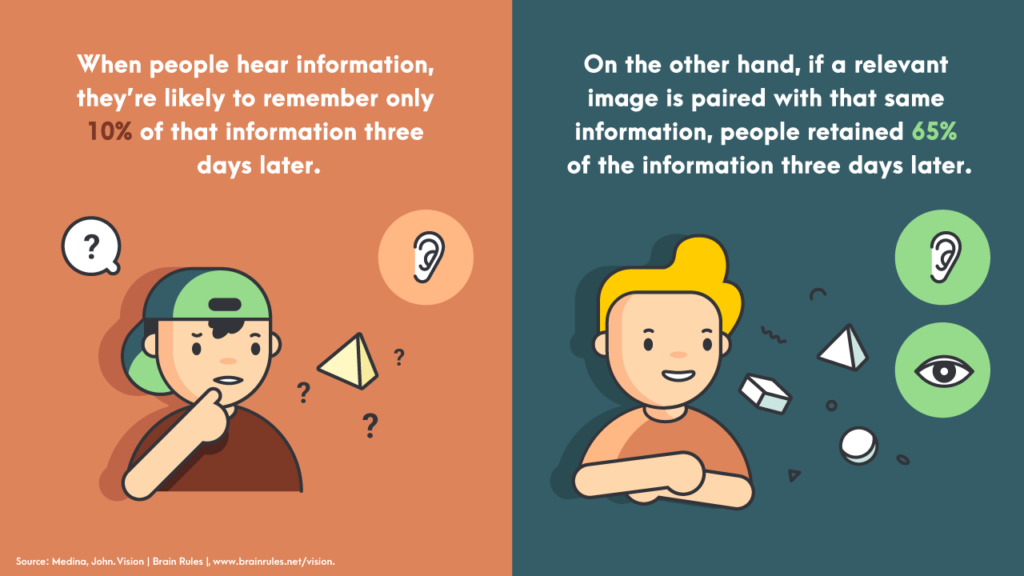
Detailed explanations of technical content in simplistic terms that reach out to the reader well can fetch higher value, not just for users. It also helps AI-based algorithms like RankBrain identify your website’s presence as a useful, relevant, and authoritative source of information.
Step-by-step guides can keep the reader hooked for long, increase the website’s dwelling time, and reduce the overall bounce rate. These content forms are also more likely to receive organic traffic than other types due to their relatability for the reader.
Infographics are always more appealing with their graphic detailing, use of colors, charts, images, and other inclusions and help keep the reader engaged for longer.
5. On-page SEO implementation
Page-level factors for ranking
SEO optimization on the web page includes various factors that can be tweaked to receive the proper attention from the targeted audience. Keyword usage under the right density is one way to improve page-level optimization of content to improve SERP rankings. With keyword inclusion in the right density, it gets easier for Google algorithms to identify the intent behind the page without any overdoing, thus helping it index such a page for ultimate ranking.
Content readability check through tools like Yoast
The readability of posted content contributes significantly to improving the on-page SEO implementation. Tools like Yoast can help bring about the required readability level for easy identification from search engine algorithms. Some factors that contribute to the overall readability of content include passive voice, length of the sentence, proper use of transitions, and other parameters that can be improved before posting.
Keyword use in the title tag
Using your targeted keyword in the title tag of content can go a long way in ensuring easy identification by search engine bots. It thus only helps in inviting organic traffic to your pages. The title tag is one of the key codes that a Google crawler would access to identify the intent and target audience of a posted content, thus helping with indexing and overall ranking.
Meta description optimization
Although meta descriptions have not been recognized as essential for content identification, their proper use is equally essential. Here’s why.
When you perform a Google search, you must have observed a small blue line of phrases available as a description under each search result. Those are the meta descriptions. Usually, people looking for the right content often read through these short descriptions to identify the relevance and open the required page.
Framing the right meta description can thus be a much-needed nudge that your SERP-ranked content would receive for inviting traffic to the website. Of course, you cannot ignore including targeted keywords to the meta description for Google to find your page through a million others.
Use of keywords and their variations
While we have already discussed keyword usage, it is important to use their variations in the forms of synonyms or expanded phrases. Doing so allows you to establish the relevance of the content for a wider target audience base instead of keeping it narrowed to just a small segment of those looking for a particular word.
It opens the posted content to a higher traffic probability, helping improve the website’s organic reach.
Image optimization
Have you experienced a website page slowing down just because of the image it carries while the rest of its texts are quickly visible? Such incidents usually happen because the size of the image uploaded on the website and the post is not optimized, which can reduce overall content accessibility. Reducing image size is thus another smart optimization to go along with for maximum results through SEO implementation.
Another aspect of image optimization is to rename it as per the relevant keyword associated with the content and add necessary tags that help bring traffic. When a Google crawler works to find suitable content for a given search query, it only scans through the codes uploaded on the website for such a query.
This means that if the image is optimized with the right keyword and tag, its chances of ending up in SERP results are equally high as any other text content, thus increasing page visibility for better outreach. Optimizing images becomes more important if your website hosts a maximum of picture content instead of text content.
User experience optimization
User experience is a sum total of all the factors that make a web page, like the content, images, web page design, ease of navigation, arrangement of information, accessibility, and the likes. User experience is also the end objective that Google or any other search engine aims to provide to all visitors.
User experience might not be accurately measurable by search engines like Google and Yahoo. However, the overall ease of use for visitors has its parameters of measurement in place that can determine the organic traffic received and dwell time involved, among other important factors.
Content detailing
Well-arranged content with all the required detailing is always a welcome sight for users and invites higher traffic due to its simplicity and ease of understanding. High-resolution pages with optimized loading speed, bulleted subheads, and other similar detailing can help the reader grasp what it includes inside at the first go. It also enables fast scanning by Google crawlers for relevance and usefulness identification.
6. Technical SEO
Technical SEO implementation has a wide scope of coverage that one needs to understand to grasp better how to maximize the overall optimization benefits of the website. The scope of technical SEO is only expanding to include new aspects and dynamics that can affect the page’s reach and traffic, like optimization for mobile phones, loading speed, etc. It is one of the key contributors to ensuring how SEO works successfully. Here’s a look.
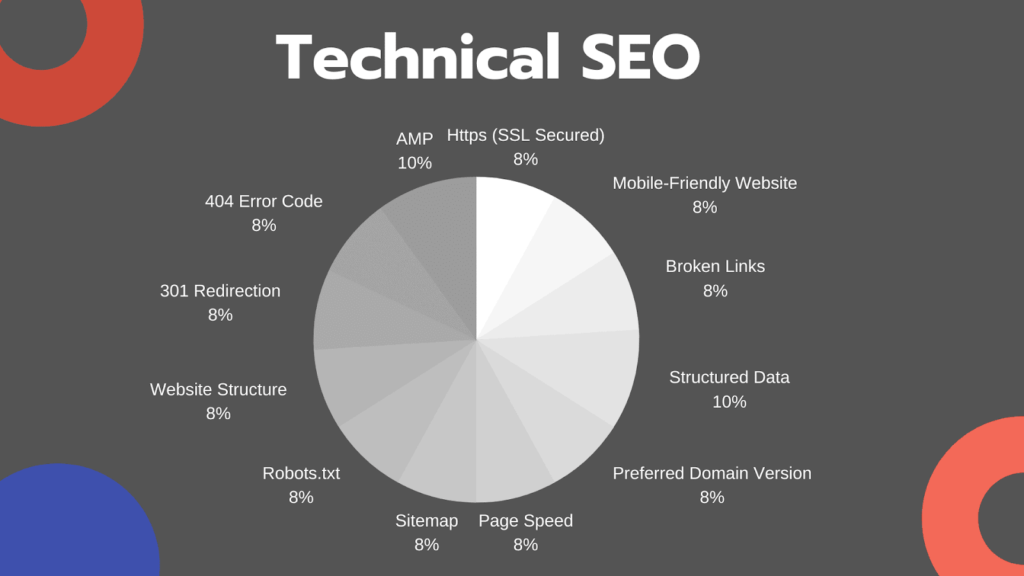
Website verification through Google Search Console
As a dashboard that gives access to a wide range of features related to your website, Google Search Console opens up a new space for keeping a tab on your website’s ranking and indexing for improved reach. You need to verify your identity as the owner of such a website to access these Google algorithm-related details measuring your website.
Periodic changes to these data stored in the console can help you track your website’s reach and any changes to it.
SEO-friendly URL creation
URL creation is another essential technical aspect related to websites that can be optimized to bring about desired changes to your website’s traffic, exposure, and reach among targeted audiences. When drafting an SEO-friendly URL, you need to ensure that the structure is consistent with other pages of the website so that Google easily identifies the category of product such a page would be categorized under.
Using target keywords when creating the URL without stuffing any keywords is also advisable. It is also best to go for short URLs as it reduces the time taken to access such a page, thus helping improve ranking. If you have already created a URL that has not been optimized, you can still go back to changing the URL and optimizing it as per your product and keyword requirements.
PageSpeed measurement and optimization
Web pages that load slowly also deter themselves from being found among the organic search results when a user types a targeted query. It also reduces the overall user experience, thus accumulating negative points among Google crawlers. Google also penalizes websites that load slower than a defined speed after its 2018 Speed Update. You can use its PageSpeed Insights tool to gauge the standard loading speed of your website and web pages. It also provides a sleuth of suggestions that one can use to improve PageSpeed.
HTTPS setup
A website’s security also contributes to its reliability among users, thus allowing search engines to index it based on reliability and trust for better rankings. Websites that carry URLs starting with HTTPS have an edge in their appearance in the search results. A Mozcast study suggests that a total of 98.5% of the total results appearing on the first SERP are secured by HTTPS-level encrypted security.
When moving to HTTPS encryption, you must make sure to re-draft the URLs of all web pages for them to remain consistent as such encryption changes the URL of each page.
Internally linked site architecture
The architectural structure of your website might not be an issue when it is small, hosting only a handful of pages. However, as you add new pages to it, structuring all the pages becomes important as the architectural setup of your website can make a huge difference.
It would allow users to navigate easily from one page to another. It would also help search engine algorithms crawl through the pages quickly to identify the relevance and usefulness of interlinked pages. You can use the hierarchy system to design website architecture to ease page indexing on the search engine.
You can also interlink different pages inside the website to establish relevance. It can be done by creating the right anchor text for hyperlink placement so finding a related page becomes easy.
Optimization for mobile phones
Website optimization was erstwhile a trend, which has now become a requirement for websites. With users increasingly surfing the Internet through their mobile, it is natural for websites to be mobile-friendly. A mobile-optimized site allows ease of indexing, higher SERP rankings, and increased traffic from the target audience.
Result tracking through Google Analytics
To help you measure the outcome of such efforts, the use of Google Analytics can come in handy. It allows you to track changes related to your organic traffic growth and target audience reach through various graphs and tables. It helps measure the degree of change for each variable as well. It can also help identify how visitors to your website interact with it, thus helping predict their future behaviors.
Businesses can further understand if the website pages can meet the needs of their target audiences or not through these results. Technical SEO done right helps eliminate critical issues for your page. Here’s an image illustration to point out some of the problems that may surface if your website or webpage’s technical SEO is not on point.

7. Link-building optimization
Take into account link-building. It can result in significant contributions related to your website’s organic traffic growth and SERP rankings over time.
Authority creation through links
Every link directed to your website from another page need not necessarily help with authority creation. Suppose you receive backlinks from high-authority websites considered of high authority in their niches and turfs. In that case, it helps improve your website’s overall authority on the Internet as the reliability and trust increase.
It further helps pass page rank from a high-authority site to yours, thus improving overall visibility and accessibility. This assists in enhancing your website’s domain authority and improves the related pages’ authority. However, this might not be the case if you receive such backlinking from a small website that is not well-known.
Receive backlinking from relevant websites
Receiving backlinks from sites relevant to the business’s operation or target audience can also help optimize its page rank for a better reach.
White-hat vs. black-hat SEO
With so many optimization options available, differentiating between white-hat and black-hat SEO practices can get overwhelming. To better understand this difference, you may look out for link schemes under Google’s list to identify which linking practices are ethical and which others can be unethical.
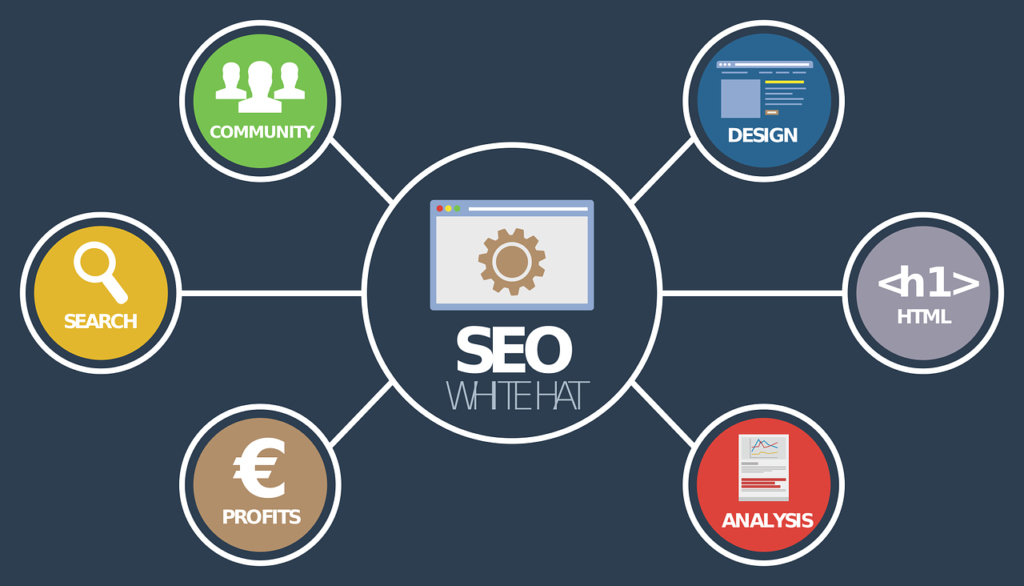
Guest posting
You can also practice guest posting as a legitimate way for backlink generation from authoritative sites. Here, you must make sure not to pursue this practice with any website for link generation and approach only relevant websites to avoid crossing the line between ethical and unethical linking.
Further, it is best to avoid using anchor texts for hyperlinking rich in targeted keywords as it can amount to spamming.
Creation of linkable assets
Linkable assets can be referred to as a pool of possible assets created online to receive backlinks from them. Popular linkable assets for backlink generation include articles targeted at busting myths, studies on the related industries, a guide. You can also add other relevant tips, resources, and examples.
User intent identification
Intent identification can be one of the crucial steps to optimizing your website and generating links from relevant and high-authority sites. It is always related to answering why a targeted user visits a search engine. User intent can vary across 5 different types and includes,
- Navigational
- Informational
- Transactional
- Commercial
The closer your website’s content is aligned with the applicable user intent for your industry, the higher chances of receiving backlinks from relevant websites. Apart from these, the use of emerging SEO trends for website optimization also defines to a great extent what SEO marketing is.
Common examples of such trends prominent in 2021 include voice search optimization, schema markup, E-A-T, and YouTube video optimization.
Who Needs SEO Marketing?
The need for SEO marketing is not limited to any particular type of business, an industry, a niche, or such other identifications. With the increasing reach of the Internet across the remotest locations of the world, people rely more heavily on the internet today than ever before to meet their everyday needs.
It means that businesses need to have a digital presence irrespective of their size, scale, or location of operation. Today, it has become indispensable to have an online presence for any business. Any venture not exposed to the internet risks losing out on many probable customers. It also faces the risk of complete market withdrawal and extinction in the long run.
Once they have created an online presence, remaining visible in the swarm of similar competing businesses is another crucial struggle that they need to navigate and can do so with the help of SEO marketing. However, strategic SEO marketing can be of the essence for various businesses depending on their short and long-term goals and aspirations. For instance, businesses looking forward to earning their place in the top few rankings on Google’s SERPs would need to pursue SEO marketing more vigorously than others.
Similarly, a business aiming to create industry-level authority on the internet can focus on content quality, backlinking from high-authority sites, and improving such other parameters to achieve their goals.
SEO Tools Used
Below is a list of 15 prominent SEO tools that can help improve SEO marketing strategies for a website. Most of these aim to enhance the quality of content and other websites and page parameters that can be checked and changed for better optimization.
- Google PageSpeed Insights
- Google Analytics
- Google Search Console
- Ahrefs Webmaster Tools
- Ahrefs Backlink Checker
- Google Ads Keyword Planner
- Google Trends
- SERPSim
- Ahrefs SEO Toolbar
- Yoast SEO PlugIn
- Copyscape
- Grammarly Premium
- Moz Local Listing Score
- JSON-LD Schema Generator for SEO
- SimilarWeb
SEO Marketing
A few steps help understand how SEO marketing works for a website or web page. They are as follows:
- You need to identify and learn how search engine algorithms like Google Hummingbird and RankBrain work, noticing the factors they use for indexing pages while crawling through websites for site and page rankings.
- Once a business understands the functioning of Google algorithms, it can identify the website integrations that can be optimized for ranking improvement and organic traffic generation.
- Next, identify the SEO integrations applicable to your niche and create a strategy for reaching out to the target audience.
- The three primary ways SEO optimization works include on-page optimization, off-page optimization, and technical optimization.
- The optimizations can spread across factors like content quality, keyword usage across web pages, URLs, content posted, backlink generation from relevant sites, optimizing page speed, page ranking, website images, etc.
- Once the optimizations are in place, it allows search engine algorithms to establish relevance for your website and/or web pages and identify its usefulness and authority.
- Based on these factors, Google selects web pages to be indexed.
- As per the optimizations included, the organic reach of a website allows it to be ranked among the SERPs. Such ranking is based on its relevance to the user intent related to a search query.
- To check if SEO marketing has been useful or not, you can use various tools to measure the change in traffic inflow to the website, page views, dwell rate, etc. Accordingly, determine a new course of action or improve the existing strategy for better results as per the set goal.
Key Takeaways
Some important points to consider from the entire understanding of SEO marketing and how SEO works are as follows:
- SEO marketing is a strategy that helps implement Search Engine Optimization for improved website traffic and SERP ranking.
- Content quality, keyword integration, relevance, backlinking and related optimizations define SEO and SEM.
- SEO is of 3 primary types, on-page, off-page, technical SEO, and local SEO.
- Search engines consider the website’s (or webpage) authority, relevance, and usefulness to establish user experience.
- Hummingbird and RankBrain are two prominent algorithms Google uses to identify sites’ usefulness and relevance.
- A search engine functions through three significant steps, i.e., crawling, indexing, and ranking, which digital marketers use for SEO implementation.
Conclusion
Search engine optimization and related marketing strategies fall under the constantly evolving turfs due to their dependency on the dynamic nature of search engine algorithms. For instance, Google rolls out its algorithmic updates from time to time to improve the overall experience of its users.
So, it is crucial to take care that irrespective of the current SEO trends that are fetching desired results, a professional digital marketer must stay updated with any changes in the algorithms that were previously applicable. Keeping updated with such changes allows one to implement the SEO changes simultaneously, thus helping withhold the SERP rankings and increasing organic site traffic with a simple understanding of how SEO works in the current scenario.
FAQs
While PPC can fetch immediate SERP rankings, it does not last long. Contrarily, SEO results in organic SERP ranking, which is long-lasting. Also, PPC marketing results in only up to 30% of the total SERP results, whereby the rest is obtained through organic results, which can greatly be a result of SEO marketing.
Two of the best tools for measuring site ranking and tracking its visibility are Google Analytics and SEMrush.
Yes, any search engine optimization carried out directly on a website’s page is a part of on-page SEO, including Alt and Title Tags optimization.
A targeted keyword often comprises not more than 2 to 3 words and carries the full intent of the content. On the other hand, a long-tail keyword is a long phrase containing 6 to 7 words, often including the targeted keyword. It carries only a part of the content’s intent and is used for establishing relevance to improve content quality.
Depending on the business’s goals, most social media platforms are often an important part of SEO marketing strategies. Most websites initiate reaching out to a new, unexplored set of target audiences through social media platforms like Instagram, Facebook, Twitter, etc.
Latest Blogs
Learn how to rank on AI search engines like ChatGPT, Perplexity, and Gemini by optimizing your content for authority, structure, and relevance. Stay ahead in AI-driven search with this strategic guide.
Explore the best healthcare SEO services for your medical practice. Improve online visibility and effectively reach more patients in need of your services.
Discover top social media agencies specializing in banking solutions, enhancing financial services and driving engagement.
Get your hands on the latest news!
Similar Posts
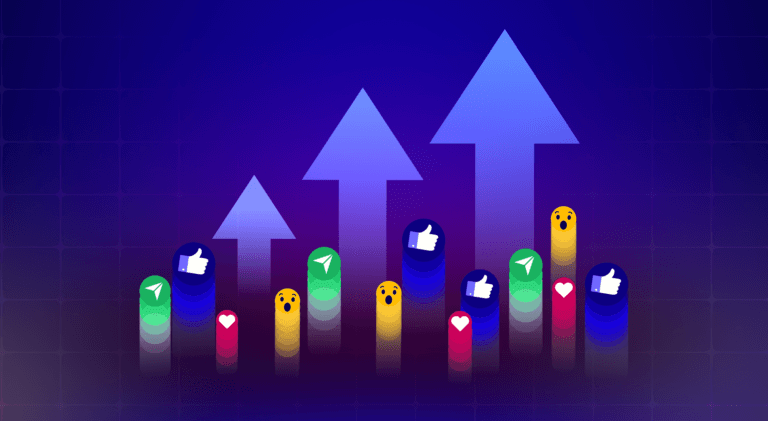
Artificial Intelligence
6 mins read
The Role of AI in Digital Marketing: AI Article Generators Transforming Content Creation
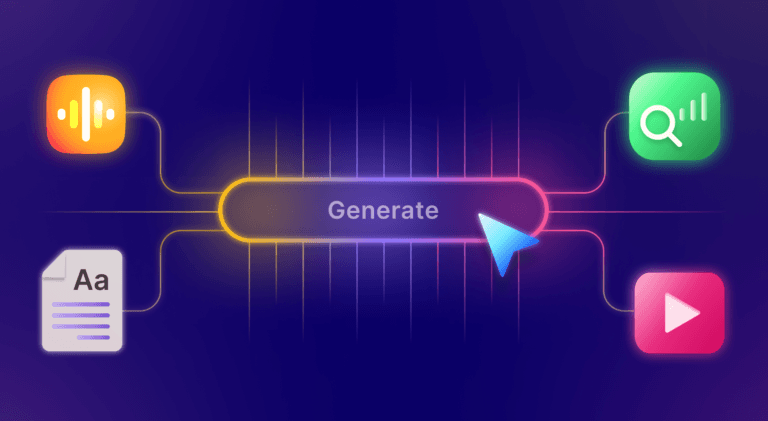
Artificial Intelligence
4 mins read
How AI Content Creator Is Shaping the Future of Digital Content

Digital Marketing
3 mins read